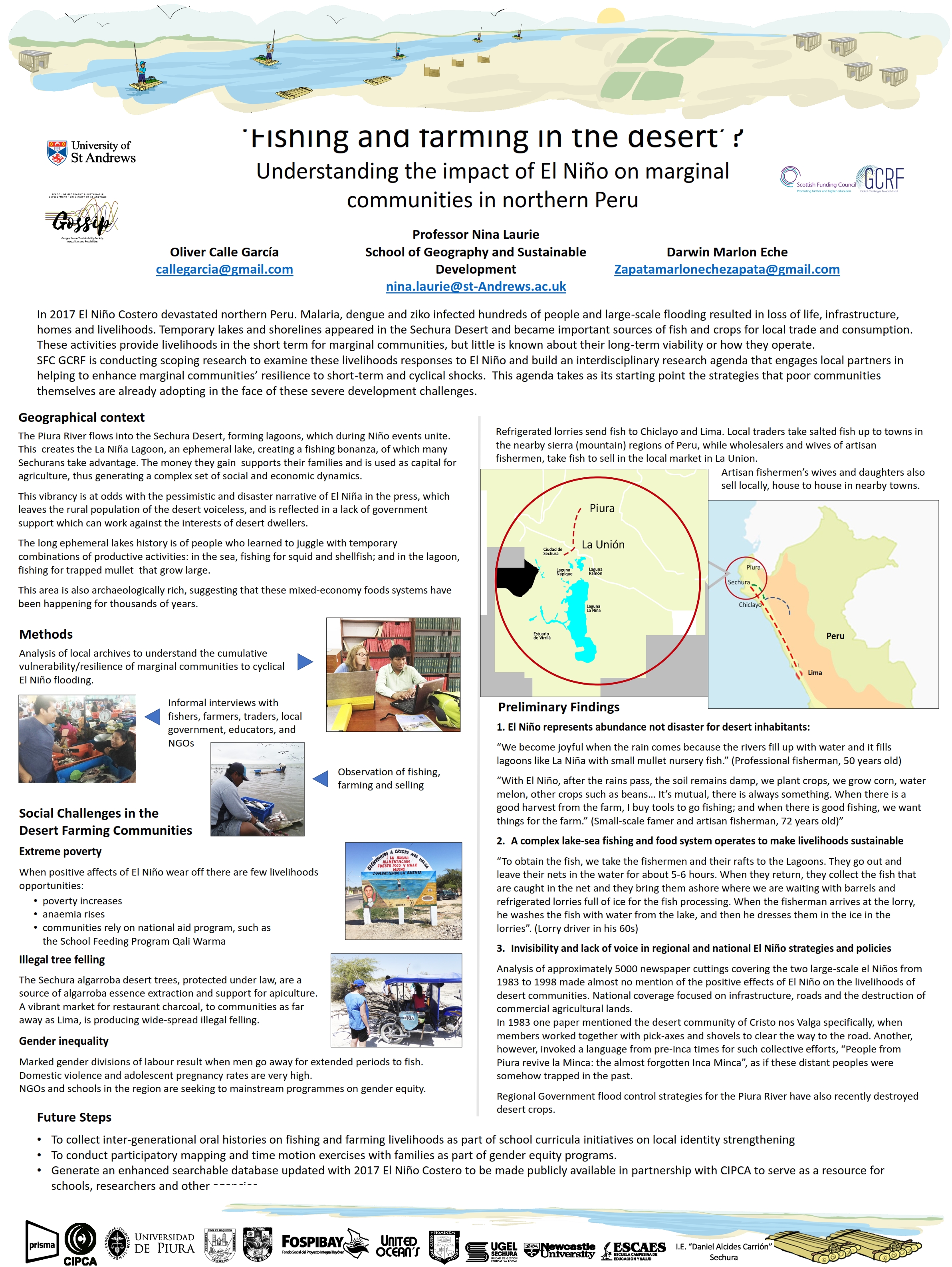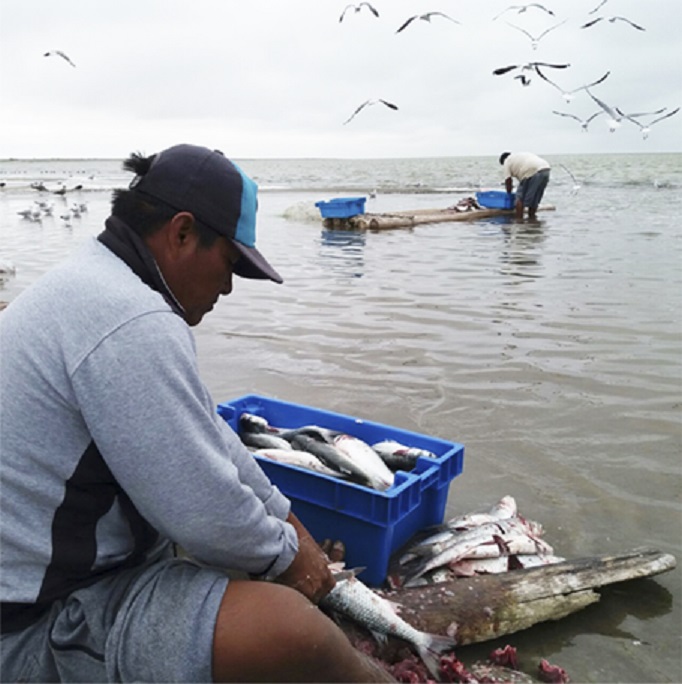Farming and fishing in the desert?
Understanding the impact of El Niño on marginal communities in northern Peru
In 2017 El Niño Costero devastated northern Peru.Outbreaks of malaria, dengue and zika infected hundreds of people and large-scale flooding resulted in loss of life, infrastructure, homes and livelihoods. However, the temporary lakes and lake-shores that emerged following El Niño have become important sources of fish and crops for local trade and consumption. For the marginal communities living in the desert, these activities provide income and improved nutrition in the short term but little is known about their long-term viability or how they operate.

The key development challenges in the desert regions reflect two main divers: ‘climate change’ and ‘global health and security’. Both have severely impacted marginalised communities over recent time because of flooding resulting from El Niño. The research, led by the School of Geography & Sustainable Development preliminary, is finding that El Niño represents abundance and economic opportunitities resulting from the complex lake-sea fishing and food systems, making sustainable livelihoods. The findings are giving voice, to those living in the deserts of Peru, in regional and national El Niño strategies and policies.

By Nina Laurie, University of St Andrews. 25th January 2020
